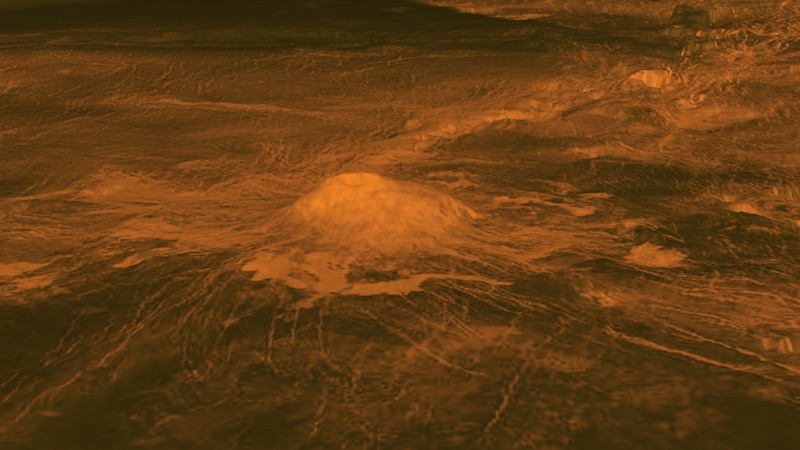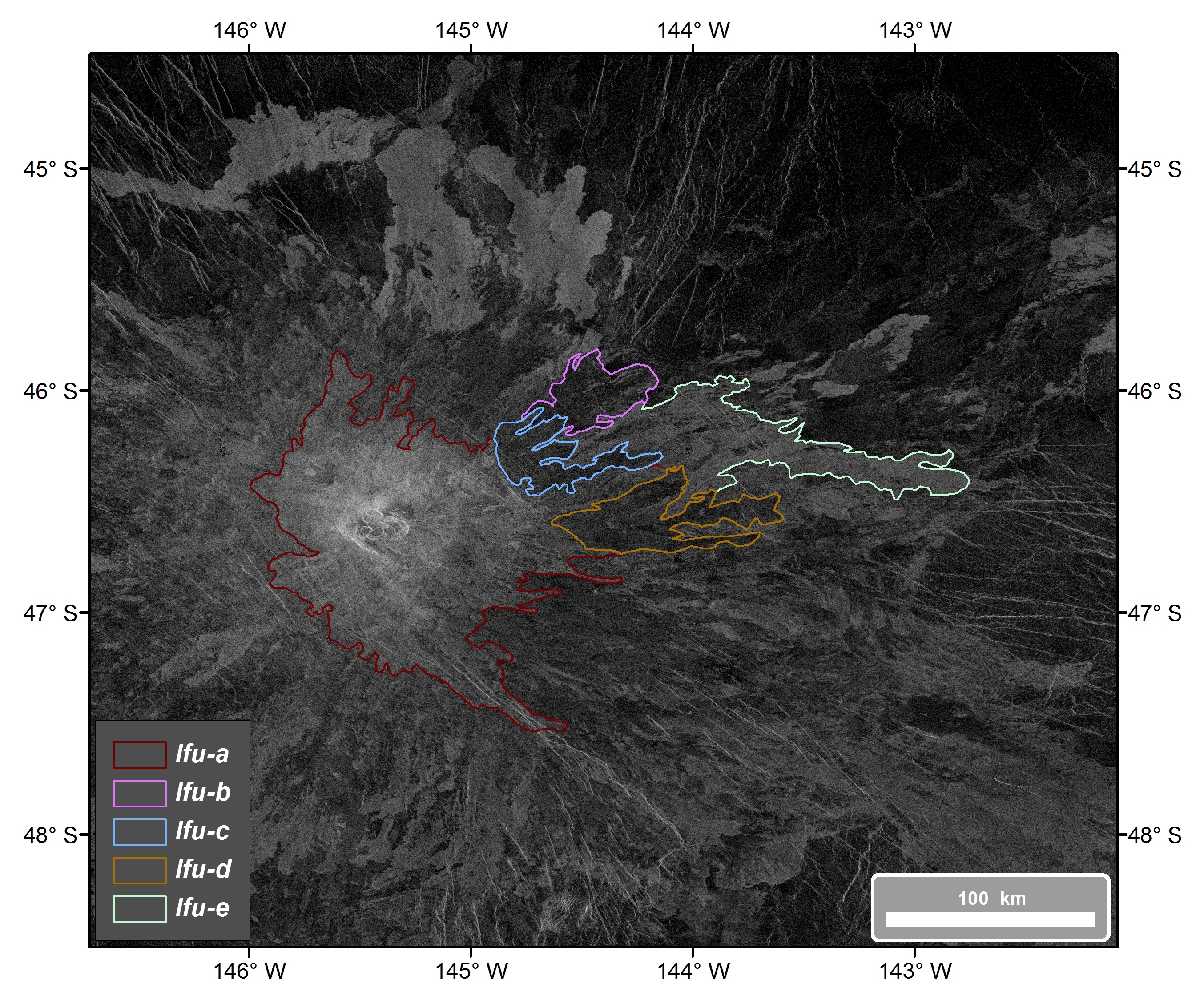Volcanoes on Venus Erupted Recently, New Study Suggests

PASADENA, Calif. –Volcanic activity on Venus took place in the recent past, geologically speaking, and may still be happening on the planet today. New research takes a deeper look at one recent eruption on Venus' surface.
The Idunn Mons volcano in the southwestern hemisphere of Venus rises 1.6 miles (2.5 kilometers) above the surrounding plains. In 2010, observations by the European Space Agency's Venus Express probe revealed that Idunn Mons is a "hotspot," meaning it radiates high levels of infrared light compared to the surrounding area. That suggests that lava flowed at the spot recently, and that the area is still warm.
Now, a more nuanced look at Idunn Mons suggests that the hotspot observations are consistent with multiple (cooled) lava flows along the volcano's eastern flank, the new research shows. The researchers behind the new work said the finding suggests that Venus' volcanos were active in the relatively recent past, and may still be active today. [Photos of Venus, the Mysterious Planet Next Door]
"Venus is a planet which has always been considered Earth's twin sister," said Piero D'Incecco of the German Aerospace Center and one of the researchers behind the new analysis. "But its cloud cover still hides a lot of secrets."
D'Incecco spoke at a media briefing at the American Astronomical Society Division for Planetary Sciences meeting in Pasadena, California.
Venus Express initially identified the hotspot on Idunn Mons in 2010 using the Visible and Infrared Thermal Imaging Spectrometer (VIRTIS) instrument. Most of Venus' surface appears cool when viewed with VIRTIS, and this is a sign that those regions haven't changed (geologically speaking) in millions of years. By contrast, the researchers who initially studied the hotspot estimated that the region could be less than 2.5 million years old. Unfortunately, the thick clouds that cover Venus prevented the Venus Express probe from getting a more detailed look at the volcano and the lava flows.

The new analysis of lava flows on Idunn Mons uses radar data collected in the early 1990s by NASA's Magellan probe. D'Incecco and colleagues built a new numerical model to simulate lava flows on the top of the mountain and the eastern flanks, and compared that model with the Magellan data.
Get the Space.com Newsletter
Breaking space news, the latest updates on rocket launches, skywatching events and more!
"According to our modeling, the flank lava flows are the ones responsible for this [hot]spot," D'Incecco said. "This is particularly important because this is the first time we can map, with such a high resolution, lava flows from a volcanic structure which is believed to be recently or still active on a terrestrial body other than Earth."
Follow Calla Cofield @callacofield.Follow us @Spacedotcom, Facebook and Google+. Original article on Space.com.
Join our Space Forums to keep talking space on the latest missions, night sky and more! And if you have a news tip, correction or comment, let us know at: community@space.com.

Calla Cofield joined Space.com's crew in October 2014. She enjoys writing about black holes, exploding stars, ripples in space-time, science in comic books, and all the mysteries of the cosmos. Prior to joining Space.com Calla worked as a freelance writer, with her work appearing in APS News, Symmetry magazine, Scientific American, Nature News, Physics World, and others. From 2010 to 2014 she was a producer for The Physics Central Podcast. Previously, Calla worked at the American Museum of Natural History in New York City (hands down the best office building ever) and SLAC National Accelerator Laboratory in California. Calla studied physics at the University of Massachusetts, Amherst and is originally from Sandy, Utah. In 2018, Calla left Space.com to join NASA's Jet Propulsion Laboratory media team where she oversees astronomy, physics, exoplanets and the Cold Atom Lab mission. She has been underground at three of the largest particle accelerators in the world and would really like to know what the heck dark matter is. Contact Calla via: E-Mail – Twitter









